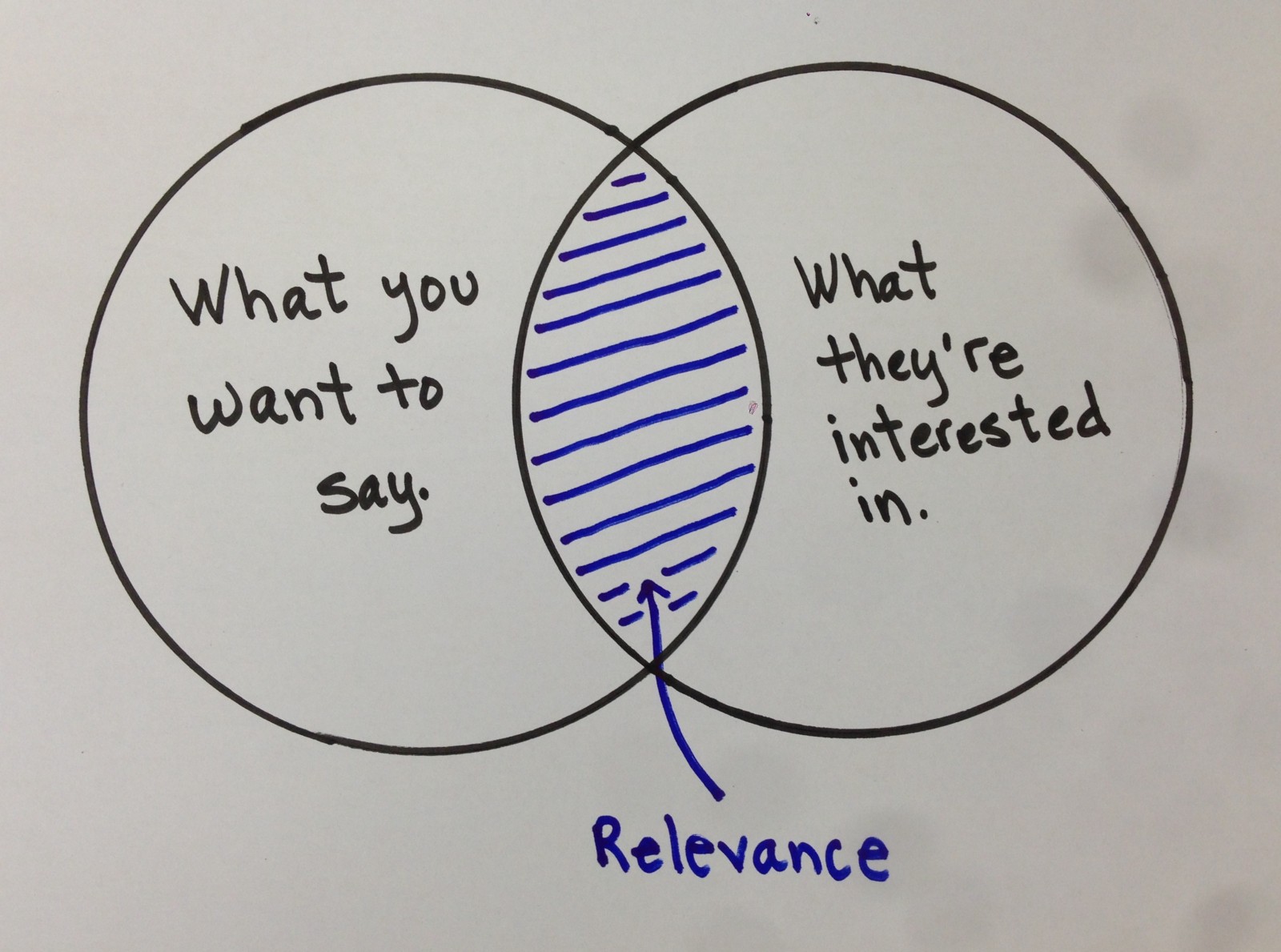Why Does Most Digital Copy Fail? 9 Problems to Watch Out For
Discover the top 9 problems that prevent most digital copywriting from generating conversions.
You’re probably on this page for one of two reasons:
- You’re publishing content, but you’re not getting the clicks and conversions you want.
- You’re ready to upgrade your content strategy, and want to find out how.
I’ve got good news for you — this article is packed to the brim with actionable tips that’ll help you out in both these situations. But before we dig into the meat and potatoes —
You need to answer one very simple, obvious question:
Why do you want to publish content online?
There’s no right or wrong answer here. You might be aiming to drive sales of your product or service. Maybe you want to establish your company as an industry authority.
Or maybe you’re hoping to get Internet super-famous and sell out, so you can dive into a giant pile of gold coins like Scrooge McDuck.

This could be you, if your digital content strategy works out.
Hey, I said “no wrong answer,” didn’t I?
But before you hire a single copywriter, you need to know the answer to that all-important question — which really breaks down into three questions:
- What will you be publishing articles about?
- What audience do you hope will read these articles?
- What action do you want them to take?
Most business owners have only vague, general answers for these questions — and so they spend thousands of dollars on content that goes nowhere, achieves nothing, and leaves them ripping out their hair in frustration.
What can you do to prevent this frustration?
Start with a clear idea of what topics you want to publish articles about, who you want to read those articles, and what actions you want those readers to take. Once you’re clear on those things, it’s time to take a closer look at the top reasons why most digital copywriting fails to generate conversions.
Problem 1: Lack of compelling subheadings
People don’t read digital copywriting the same way they read books and magazines. Research shows that web visitors start by skimming the text for attention-grabbing words and phrases, then dive deeper if anything catches their interest.
In fact, Google’s crawler — the algorithm that indexes web content — analyzes online writing exactly the same way. It scans headlines and subheads for interesting words and phrases, then scours the text for keywords it’s decided are part of the same topic cluster.
Google continually makes changes to that ranking algorithm—and the best copywriters keep up with these changes. As of the latest major update in July 2017, the algorithm ranks mainly on the basis of relevance.

A handy Venn diagram summarizing how relevance works on Google.
A lot of interrelated factors feed into this relevancy score. We’ll go deeper into many of them in this article. The most important takeaway right now, though, is this:
Your headline and subheads need to tell a compelling story all on their own.
If your subheadings fail to grab the reader’s—and Google’s—attention, you’re dead in the water before you even get started.
Think of your headline and subheadings as a mini-summary of the article. Read them as a sequence of statements, without looking at any of the text below. Do they summarize the article’s entire concept? Does each lead naturally to the next? Do they raise intriguing questions, and hint at the answers?
Before you hit that “Publish” button, you need to be able to answer these questions with a confident “yes.”
Problem 2: Walls of text
Your copywriters might create a brilliant masterpiece of an article — but if your website presents it in a format that’s hard to skim, all that hard work will go to waste. In the world of online publishing, layout is every bit as important as content. Yes, you read that right: the visual presentation of your text matters just as much as the text itself. Why?
If your content doesn’t have an easy-to-read layout, nobody’s going to read it in the first place.
Very few people sit down and focus intently on a piece of digital copywriting, the way they do with a movie. Instead, they glance over articles while they’re at their desk, on the phone, watching TV, or waiting for lunch to arrive.
And when they scroll down and see nothing but text… and more text… and — you’ve got to be kidding — even more text… they’re going to do the same thing you’d do in their place, and click over to another tab. TLDR.
When that happens, you’ve lost your audience.
But look — it’s easy to break up a wall of text:
- Drop in some bullet points
- Throw in an image
- Add an infographic
- Embed a video
- Insert a quote box

Blow up those walls of text!
With the range of multimedia content options available on WordPress and other platforms, there’s really no excuse not to spice up your text with some eye-catching visuals.
Of course this doesn’t mean that you should go overboard with flashy graphics that make readers’ eyes bleed. It means you need to give their eyes a break every few paragraphs—give them something pretty to look at.
Problem 3: Over-reliance on SEO keywords
You might’ve heard that Google loves articles packed with keywords. And while that is sometimes true —
Keyword count alone isn’t the end-all of search-ranking success.
When digital copywriting experts first discovered that Google’s algorithm preferred longer articles with keywords, a gold rush erupted — companies around the world hired teams of talentless copywriters to crank out heaps of incoherent nonsense stuffed with irrelevant keywords and links.
But Google, smart folks that they are, quickly caught on to this little shortcut. As of Google’s latest major algorithm update in July 2017, articles get ranked NOT on length and keyword density, but on quality and relevance (see “1: Lack of compelling subheadings”).
Google’s algorithm uses a variety of factors to determine an article’s relevance — and they’re testing and rolling out brand-new criteria every few months in an effort to keep spam links off that ever-so-valuable first page of search results.
Despite these facts, the Internet is still full of search engine optimization (SEO) snake oil sellers who claim to be able to boost your site’s search ranking simply by stuffing your content full of high-traffic search keywords. They may indeed be able to deliver those results for a few days or weeks — but Google’s algorithm adapts quickly, and its criteria are continually changing. Sooner or later, these “get-ranked-quick” SEO tactics will cost you much more than they earn.
So what approach will actually get your site to the top of the search charts?

What SEO approach will actually get your digital content to the top of the search charts?
While the exact mix of techniques continues to evolve, real SEO masterminds like us recommend using Google’s Keyword Planner to generate groups of related keywords, and using keywords from each group in related articles on your site, all of which link to one another.
By leveraging different keyword groups in concert, you’ll help Google recognize your site as a hub of high-relevance information on your industry, and your search ranking will begin to rise.
But keyword grouping is just one technique among many — and a complete SEO solution should address the problem not only from the keyword angle, but also in terms of elements like:
- Link-building
- XML sitemaps
- Meta descriptions
- Previews
- Canonical tags
- Schema tags
- Image alt text
And those factors are just the beginning.
Ask most “SEO experts” direct questions about how all these elements work together, and you’re likely to get a blank stare in response. So:
Never trust an “SEO expert” who’s obsessed with keywords — because keywords are just the tiniest tip of the SEO iceberg.
Most SEO snake-oil salespeople have no idea what they’re talking about. It takes agility and dedication to stay on top of this fast-moving field, and only a small group of professionals keep up with the latest developments.
Problem 4: Lack of relevant links
Your articles don’t exist in a vacuum. When readers see no links to back up the statements you make — and, more to the point, when Google doesn’t see any links to or from your articles — you look less like an authority on your topic, and more like a lone fanatic.
If you aim to present yourself as an influencer, you need to actively join your industry’s conversation.
Start by compiling a list of articles on other sites, related to the specific topic you’re publishing content about. Put together a spreadsheet of keywords used in those articles, and (if you have access) use Google’s Keyword Planner to come up with keyword groups related to those search terms.
Next, work keywords in that group into your article. Don’t overdo it — only use keywords where they actually make sense, but don’t force them in where they don’t fit the flow of the article.

Keep your links relevant, and Google will love you for it.
Now comes the linking. Set up your relevant keywords to link to articles on other sites that contain keywords in the same group. For extra brownie points, contact the owners of those sites, and have them link their related keyword groups back to relevant pages on your site. The more of these reciprocal link arrangements you’re able to set up, the more Google will recognize your site as a core participant in conversations about your chosen topics.
One word of caution, though: a lot of self-proclaimed “SEO experts” will tell you to set up huge amounts of backlinks — links on high-traffic web pages that point back to your site. But while some backlinks can definitely help boost your search ranking —
Google has caught on to the backlinking trick, and now actively penalizes site owners who violate its backlink policies.
So use this technique with care, and only attempt it if you know exactly what you’re doing.
Problem 5: Overuse of tech terms
Ever noticed how easy it is to tell the difference between a person who’s actually an expert, and someone who’s just pretending to be? One of the most obvious indicators of fake expertise is an overreliance on technical buzzwords.
While some technical terminology can help demonstrate that you do, in fact, know what you’re talking about, jargon is only impressive when you’re able to explain its meaning clearly.
As the physicist Richard Feynman famously said, “If you can’t teach a concept to a six-year-old, that means you don’t really understand it.” I’ve written plenty of papers packed with dense terminology — but I always take care to define my terms clearly, use them precisely, and explain the implications of every statement I make.

Always remember Richard Feynman’s famous test: ask for examples!
Here’s Feynman’s famous litmus test.
When you hear someone use a technical term, ask them this simple question:
“What’s an example of that?”
If your copywriter can’t answer that question off the top of their head, that means they don’t fully understand the terminology they’re using — and, trust me, smart readers will see through that flimsy act from a mile away.
So tell your writer to go back to their sources, do some intensive research, and resist the urge to write one more line until they can provide a clear explanation of the term in question. Your readers will thank you for it.
Problem 6: Failure to connect cause and effect
You might be surprised to learn that one specific word has been proven to raise conversion rates by a whopping 30 percent.
What’s that word?
“Because.”
While this word isn’t a universal cure-all for low engagement, it’s been shown to deliver powerful results when used in proper context, to explain the causes that lead to particular effects.
A Harvard study found that when people ask to cut in line without offering a reason, they’re only allowed to do it 60 percent of the time. But when people add the word “because” to their request — for example, “I need to use the printer quickly because I’m late for this meeting” — the compliance rate skyrockets 90 percent.

Remember this one simple word every time you create digital content.
In other words —
When people understand the cause of a problem, they’re far more likely to pay attention to it.
This technique is easy to adapt to digital copywriting. Rather than just saying, “Don’t use too many SEO keywords in your articles,” try saying something like:
“When you overuse SEO keywords, Google actively ranks your site lower, because its algorithm thinks you’re spamming. And it’s probably right, so cut that out.”
Instead of just offering a vague warning, you’ve stated a particular outcome to be avoided, explained exactly why that outcome occurs, and provided advice for avoiding it. When it comes to getting your point across, this cause-and-effect approach makes all the difference in the world.
Problem 7: Scarcity of specifics
I once worked with a copywriter who seemed to be allergic to specific examples. He’d post long, super-passionate articles packed with exciting visuals — yet every time he had a chance to call out a particular case-in-point, he’d ignore it, and hurry on to the next paragraph.
For example, he’d write, “A lot of companies have had huge success with this technique.” But instead of saying which companies he was talking about, or what results they’d achieved, he’d end the paragraph and start talking about a new topic!
I was completely baffled by this writing style, so finally one day I asked him why he did this.
His reasoning, it turned out, was that he got so caught up in the flow of writing that he was afraid to slow down and look up examples! The solution, of course, was pretty straightforward:
Write out your whole argument step by step — then go back and look up facts that support each point, and work them in where appropriate.

Before you even start writing a detailed article, write out your whole argument step by step.
Before you publish an article, put it aside for a day or so, then come back to it with fresh eyes. You’ll notice points your copywriter could back up with examples and figures.
If you can’t think of those specifics off the top of your head, that’s totally fine — but be sure your writer takes the time to dig around for hard numbers and sources to cite. You’ll come across as much more knowledgeable.
Problem 8: Lack of in-depth research
Before you hire a copywriter to create an article for you, it’s very important to ask them these two pointed questions:
- How deeply do you understand this topic?
- How intimately do you know my audience?
If your copywriter doesn’t understand the topic they’re writing about, and who exactly they’re writing it for — and why you expect that audience to care in the first place — they’ll only make it a few paragraphs before they start spiralling off into perplexing questions: How technical should I get? Are there other schools of thought about this? Is this section even helpful? Should I include more resources here?
The questions will pile higher and higher, until the writer loses all sense of direction — or, worse yet, sends you an unpublishable, incoherent mess.
Save yourself and your copywriter a boatload of trouble by following —
The Five P’s: “Proper preparation prevents poor performance.”

Before publishing any piece of digital content… make sure you’ve done your research!
As cheesy as this slogan sounds — and believe me, I know it’s cheesier than a Wisconsin state fair — it’ll make your job vastly easier in the long run. A few hours of preparatory research might sound like a painful slog, but it’s a whole lot less painful than two days of writing around in circles, getting no closer to a final draft.
By the time your copywriter sits down to type that first sentence, they should be able to chatter happily about the topic for minutes on end, with a specific listener in mind. In fact, the writer should be bursting at the seams to educate your audience about all the fun facts they’ve learned.
They should know why your readers will be interested in those facts, and how the information they present will be useful to your audience. Only then should you give ‘em the green light.
Problem 9: Just plain sloppy writing
Oh, heaven preserve us from this plague of cut-rate copywriters! I can’t tell you how many times I’ve seen clients balk at the price of a professional — only to come running back a week later when their “much more affordable” writer delivers a barely coherent scrawl.
At best, these cheap knock-off articles come brimming with grammatical errors and misused technical terms. At worst, they’re outright inaccurate and misleading.
Smart business owners catch on to these copywriting failures pretty quickly, and most end up shelling out for a seasoned veteran of the writing business who knows how to present a detailed explanation with precision and clarity. After all —
Who wants the embarrassment of publishing an article that confuses “warranty” with “warrantee,” refers to a no-brainer as “not a brainer” — or even misspells the client’s company name in the headline?
And yes, before you ask, I have witnessed all the above — and worse.

Don’t hire a digital copywriter whose work will make you facepalm.
Unfortunately, these problems aren’t rooted in any single issue. They occur due to a whole range of factors, including excessively tight deadlines, inadequate research, poor grasp of the English language, and good old-fashioned laziness and lack of attention to detail.
Any of these shortcomings can destroy an article’s credibility — and when all of them come crashing together, they turn into the perfect storm of literary disaster.
If you’re dead set on hiring a cut-rate copywriter, have fun. But be aware that flawless copywriting takes years of practice, along with an uncanny degree of attention to the nuts and bolts of the craft.
Most bargain-bin writers just aren’t capable of bringing that level of skill and focus to the table. To get the results you expect, you’re going to have to go with a pro.
Want to learn how to brand yourself as a top expert in your industry—and take over the first page of Google search results?
We’d love to show you how.
Schedule your free consultation now.

A 15-year veteran of the journalism and media industries, Ben loves to energize audiences about the frontiers of science, culture and technology — and the ways all these come together.


 (323) 904-8463
(323) 904-8463
